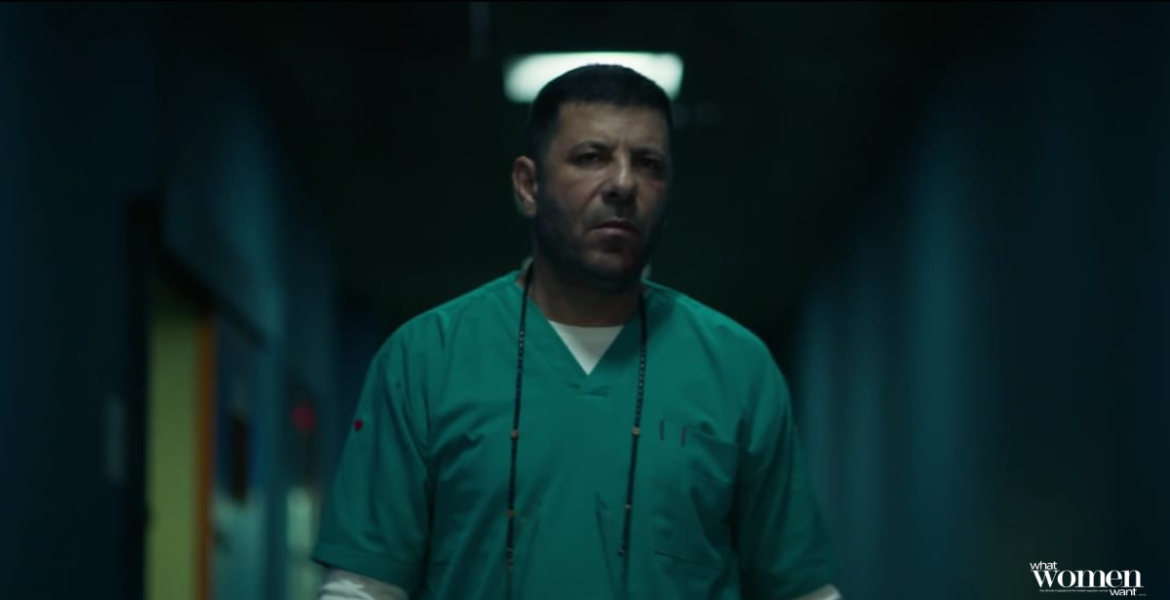Characters breathe life into the narratives they inhabit, and Eyad Nassar stands as a maestro of emotive portrayals. In this interview, Nassar delves into the intricate artistry of character construction and the captivating journey of embodying complex personas. From dissecting the nuances of his role to unraveling the philosophical underpinnings of storytelling, he offers a glimpse into the inner workings of his craft.
Eyad Nassar on Hossam:
Reflecting on his portrayal of Hossam, Nassar unravels the layers of the character. “I don’t know what to say about Hossam,” he thinks. “I would say he is a wounded person. He is a person who has their own struggles.” Nassar’s empathetic approach shines through as he delves into the depths of Hossam’s psyche. He embraces the character’s vulnerabilities, “He has a lot of wounds; I usually call them ghosts. He has many ghosts that affect him and he does not deal with them.” Yet, he still sympathizes with Hossam, “At the same time, he has his own definition of love, and he follows that.”
Similarities Between Actor and Character:
Nassar sheds light on the relationship between actor and role. He draws parallels between himself and the characters he portrays. “When an actor works, he is his own material,” he declared. He explained that every person carries all human traits but with different intensities. So, he brings forward the traits of the character and magnifies them to become another character. He explained, “In doing so, I become another person – I become Hossam. But at the end, these materials are within me.” This seamless integration of self and character emphasizes Nassar’s transformative powers. He transcends the confines of his own identity to embody the essence of his roles.
Moral Ambiguity of Selat Rahim:
In discussing the themes of Selat Rahim, Nassar emphasizes the importance of portraying characters without judgment. ” The nature of this series is that all characters are gray. Characters that you cannot judge because you understand their motives”, he explained. “You understand their motives, even if you do not agree with their actions.” This nuanced approach to character portrayal fosters a deeper connection between viewers and the narrative. It allows the viewer to understand and empathize with the characters.
The Evolution of the Script:
Reflecting on the collaborative process of script development, Nassar offers insight into the organic evolution of the narrative. He reflected on the journey with Tamer Nady, the director, and Mohamed Hisham Obaya, the writer, “We built the script one by one”. He explained, “We started with this series with only a line. The logline, which was a person wants a surrogate to replace his son that he lost.” Nassar, Nady, and Obaya crafted the framework that gave life to the characters. It was guided by a shared vision and collaborative spirit. This synergy between creative minds laid the foundation for a compelling narrative tapestry, enriched by the diverse perspectives and contributions of the team. “This is the way writing works when working with a harmonious team that adopt the same idea.”
Nassar on the Finale:
On his character’s fate, Nassar delves into the profound significance of destiny and sacrifice. “It is his destiny to die,” he reflects. “In a moment of fatherly instinct, he chooses to sacrifice himself for his child.” The breaking of stereotypes highlights the series’ commitment to challenging conventional narratives and illuminating the complexities of the human experience. He explained, “It is usually the man that tells the woman that she must abort the baby. In our series, it is the wife that said that. Also, when doctors say we can either save the baby or the mother. In our series, it is either the father or the baby.”
The Challenges of Selat Rahim:
Despite the challenges in the filming process, Nassar embraces the opportunity to immerse himself in the authenticity of each scene. “I love when the scenes are challenging” he enthuses. “I want to act real humanitarian moments.” The rawness of these emotional scenes is what resonates with audiences on a profound level. Nassar offers a poignant reflection on the enduring resonance of storytelling. “The power of storytelling lies in its ability to unite viewers and characters,” Nassar said. “You could even do that with the character of Godzilla. You could make the viewer bond with him over his pain”, joked Nassar.

